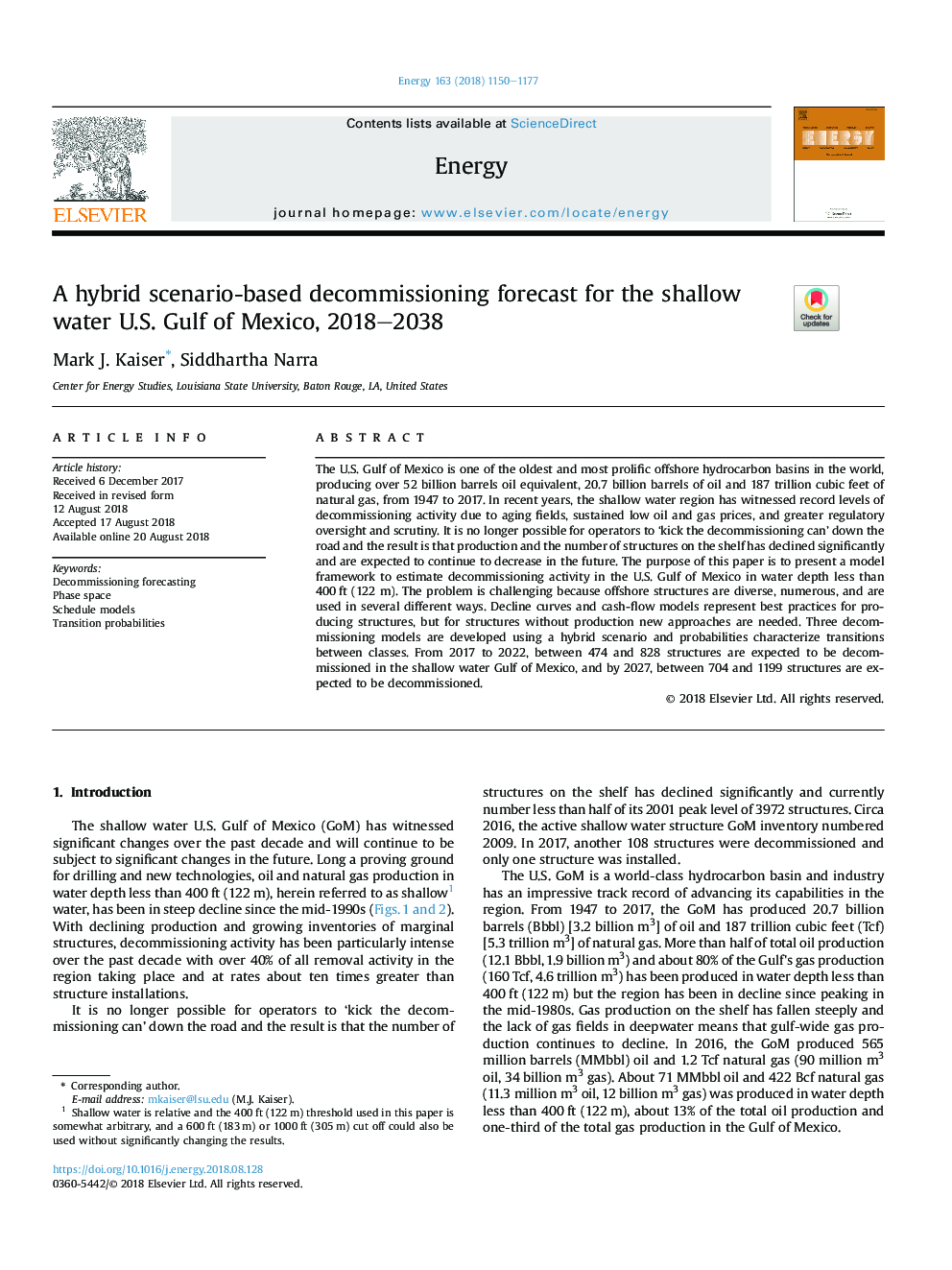| Article ID | Journal | Published Year | Pages | File Type |
|---|---|---|---|---|
| 10136321 | Energy | 2018 | 28 Pages |
Abstract
The U.S. Gulf of Mexico is one of the oldest and most prolific offshore hydrocarbon basins in the world, producing over 52 billion barrels oil equivalent, 20.7 billion barrels of oil and 187 trillion cubic feet of natural gas, from 1947 to 2017. In recent years, the shallow water region has witnessed record levels of decommissioning activity due to aging fields, sustained low oil and gas prices, and greater regulatory oversight and scrutiny. It is no longer possible for operators to 'kick the decommissioning can' down the road and the result is that production and the number of structures on the shelf has declined significantly and are expected to continue to decrease in the future. The purpose of this paper is to present a model framework to estimate decommissioning activity in the U.S. Gulf of Mexico in water depth less than 400â¯ft (122 m). The problem is challenging because offshore structures are diverse, numerous, and are used in several different ways. Decline curves and cash-flow models represent best practices for producing structures, but for structures without production new approaches are needed. Three decommissioning models are developed using a hybrid scenario and probabilities characterize transitions between classes. From 2017 to 2022, between 474 and 828 structures are expected to be decommissioned in the shallow water Gulf of Mexico, and by 2027, between 704 and 1199 structures are expected to be decommissioned.
Keywords
Related Topics
Physical Sciences and Engineering
Energy
Energy (General)
Authors
Mark J. Kaiser, Siddhartha Narra,
